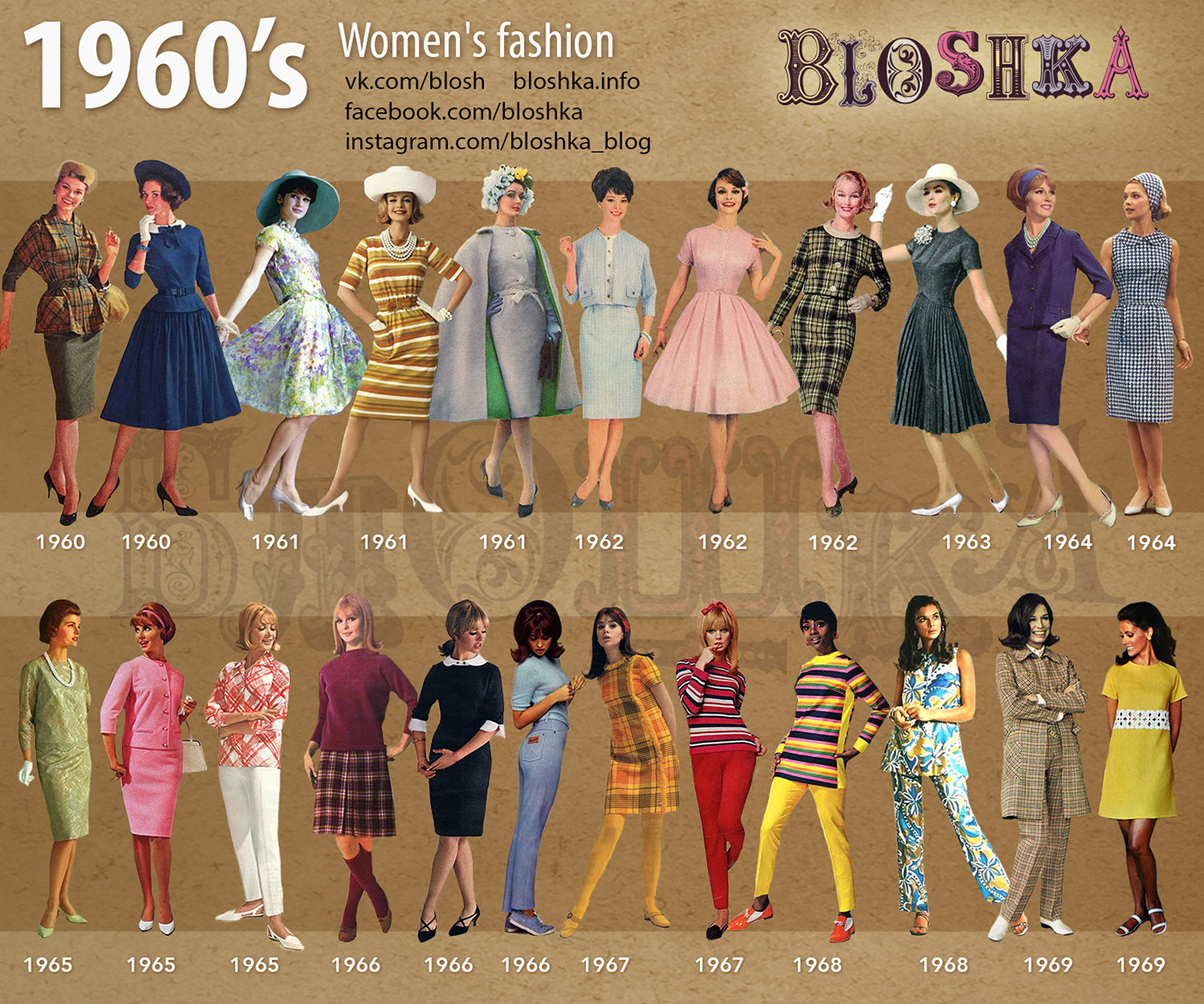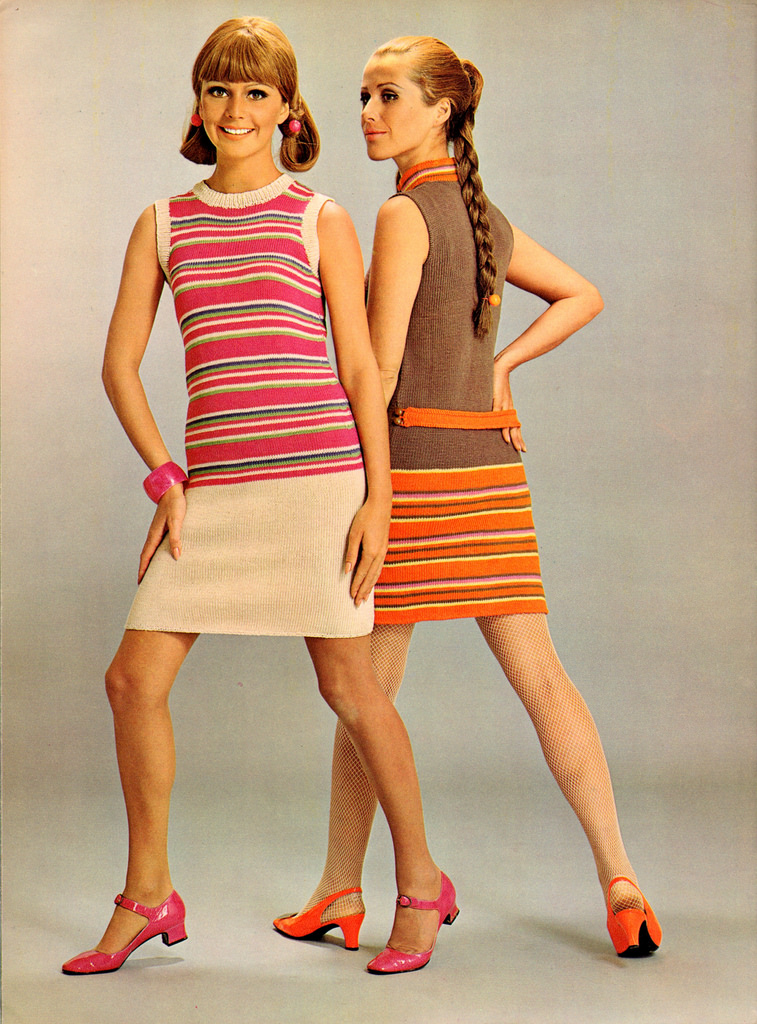1960s Chevy Trucks For Sale: Your Comprehensive Guide to Owning a Classic Piece of Americana types.truckstrend.com
The roar of an inline-six or a small-block V8, the unmistakable lines of a utilitarian yet stylish design, and the tangible connection to a bygone era of American ingenuity – these are just a few reasons why 1960s Chevy trucks remain enduringly popular. Far more than just old workhorses, these vehicles have transcended their original purpose to become highly sought-after collector’s items, canvases for customizers, and beloved symbols of mid-century Americana. Whether you’re a seasoned enthusiast or a first-time classic truck buyer, navigating the market for a 1960s Chevy truck for sale requires a keen eye, practical knowledge, and a clear understanding of what makes these machines so special. This guide will walk you through everything you need to know, from identifying the right model to finding that perfect vintage hauler.
Why Choose a 1960s Chevy Truck? The Enduring Appeal
1960s Chevy Trucks For Sale: Your Comprehensive Guide to Owning a Classic Piece of Americana
The allure of a 1960s Chevrolet truck is multifaceted, appealing to a broad spectrum of buyers for various reasons:
- Timeless Design: The C/K series, introduced in 1960, brought a revolutionary new look to trucks. From the "eyebrow" hood of the early 60s to the sleek "Action Line" styling of the late 60s, these trucks possess a distinctive aesthetic that stands out in a sea of modern vehicles. Their simple, honest lines exude character and charm.
- Robust Engineering & Simplicity: Built during an era when vehicles were designed to be durable and easily repairable, 1960s Chevy trucks are renowned for their mechanical simplicity and rugged construction. This makes them relatively easy to maintain, and many common repairs can be tackled by a home mechanic.
- Unrivaled Customization Potential: The aftermarket support for these trucks is immense. They are a favorite platform for "restomods" – combining classic aesthetics with modern performance and comfort features like disc brakes, power steering, air conditioning, and contemporary engine swaps. Whether you envision a lowered street cruiser, a lifted off-roader, or a perfectly restored original, the possibilities are endless.
- Strong Community & Parts Availability: A massive enthusiast base ensures a vibrant community for sharing knowledge, tips, and resources. Crucially, the availability of both reproduction and New Old Stock (NOS) parts is excellent, making repairs and restorations much more feasible than with many other classic vehicles.
- Investment Potential: While not all classic vehicles appreciate, well-maintained or professionally restored 1960s Chevy trucks, particularly popular models like short-bed C10s, have shown a consistent upward trend in value, making them a potentially rewarding investment for the right buyer.

Key Models and Their Characteristics: Navigating the C/K Generations
The 1960s saw significant evolution in Chevrolet’s truck lineup, primarily centered around the C/K series, denoting 2WD (C) and 4WD (K) variants.
First Generation C/K Series (1960-1966)
These trucks were a radical departure from their predecessors, featuring a new, lower stance and, most notably, an independent front suspension (IFS) with torsion bars, offering a significantly improved ride quality compared to earlier beam-axle trucks.
- Distinctive Design: Known for their unique "eyebrow" hood design (especially prominent in 1960-1961), these trucks have a classic, almost automotive-like front end.
- Chassis & Suspension: The IFS was a game-changer, providing a smoother ride. Coil springs were used in the rear for C-series trucks, enhancing comfort.
- Engine Options: Initially, they offered inline-six engines (235, 261, 283, 292 cu in) and later incorporated V8 options (283, 327 cu in).
- Popular Models:
- C10/K10: Half-ton trucks, the most popular for customization and daily driving.
- C20/K20: Three-quarter-ton trucks, offering greater hauling capacity.
- C30/K30: One-ton trucks, heavy-duty workhorses.
- Suburban: Early SUVs, highly sought after today.
- Panel Trucks: Enclosed cargo vans based on the truck chassis.

- Bed Styles: Available in "Fleetside" (smooth-sided) and "Stepside" (fendered with a step) designs. Short bed Fleetsides are often the most desirable due to their clean lines.

Second Generation C/K Series (1967-1972 – Focusing on 1967-1969 for the 60s)
Often referred to as the "Action Line" or "Glamour Pickups," this generation introduced a more refined, modern, and sleeker design, moving away from the "eyebrows" to a more integrated front end.
- Refined Styling: A clean, horizontal grille, sculpted side panels, and a more integrated cab and bed design gave these trucks a contemporary look.
- Improved Comfort: The interior was redesigned for better ergonomics and comfort, often including padded dashboards and more car-like features.
- Engine Options: A wider range of V8 engines became available, including the 350 and 396 big-block, alongside the reliable inline-sixes.
- Popular Models:
- C10/K10: Still the most popular, especially short beds.
- CST/Custom Sport Truck: A premium trim level offering more amenities.
- K5 Blazer (introduced 1969): A short-wheelbase SUV, convertible top option, now incredibly desirable.
- Suburban: Continued to evolve, offering more passenger comfort.
- Bed Styles: Fleetside and Stepside continued, with short-bed Fleetsides being particularly coveted.
Where to Find 1960s Chevy Trucks For Sale
The digital age has made finding classic vehicles easier than ever, but a multi-pronged approach is best:
- Online Marketplaces:
- Specialized Classic Car Sites: Hemmings.com, ClassicCars.com, Autotrader Classics, Bring a Trailer (for high-end, well-documented examples).
- General Marketplaces: eBay Motors, Craigslist, Facebook Marketplace. Be wary of scams and always verify sellers.
- Auction Sites: Mecum Auctions, Barrett-Jackson, RM Sotheby’s – for higher-value, professionally restored, or rare trucks.
- Specialized Dealerships: Many dealerships focus exclusively on classic and collector vehicles. They often offer pre-inspected trucks, but prices may be higher.
- Local & Regional Classifieds: Check local newspapers or auto trader publications.
- Car Shows & Swap Meets: Great places to see trucks in person, talk to owners, and network. You might find a "for sale" sign.
- Word of Mouth & Forums: Join online forums or local classic truck clubs. Enthusiasts often know about trucks for sale before they hit public listings.
- "Barn Finds" & Private Sales: While rare, stumbling upon a forgotten truck or buying directly from an owner can sometimes yield a great deal, but often means buying "as-is."
What to Look For: A Buyer’s Guide to 1960s Chevy Trucks
Buying a vintage truck is different from buying a modern car. Patience and a thorough inspection are crucial.
- Rust, Rust, Rust: This is the #1 enemy. Check:
- Cab Corners & Rocker Panels: Common rust areas due to water traps.
- Floor Pans: Under the carpet/mat, especially near the firewall and door sills.
- Bed Floor & Bed Sides: Look for rot, especially where the bed meets the cab and tailgate.
- Fenders & Wheel Wells: Check for bubbling paint or holes.
- Frame: Inspect the entire frame for cracks, bends, significant rust pitting, or poor previous repairs. A bent frame is a deal-breaker.
- Engine & Drivetrain:
- Leaks: Look under the truck for oil, transmission fluid, or coolant leaks.
- Startup: Listen for unusual noises (knocking, ticking, grinding). Blue smoke indicates burning oil; white smoke can be head gasket issues.
- Transmission: Check fluid level and color. Test all gears, including reverse. Look for hard shifts or slipping.
- Differential: Listen for humming or clunking noises.
- Suspension & Steering:
- Play: Check for excessive play in the steering wheel.
- Worn Components: Look for worn bushings, ball joints, tie rods.
- Shocks: Leaking or worn shocks will affect ride quality.
- Brakes: Check the pedal feel (spongy indicates air or fluid issues). Ensure the truck stops straight and without excessive effort. Most older trucks have drum brakes, which require more effort than modern disc brakes.
- Electrical System: Test all lights (headlights, taillights, turn signals, brake lights), wipers, horn, radio, and gauges. Look for frayed or exposed wiring.
- Interior: Assess the condition of the seats, dashboard (cracks are common), door panels, headliner, and all trim. Missing or broken interior pieces can be costly to replace.
- Glass & Seals: Check for cracks in the windshield and windows. Inspect weatherstripping around doors and windows for cracks or deterioration, which can lead to leaks.
- Documentation: Always ask for the title and ensure it matches the VIN on the truck. Maintenance records, build sheets, or previous restoration photos are a huge bonus.
- Professional Inspection: If you’re serious about a purchase, especially from a private seller, invest in a pre-purchase inspection by a mechanic familiar with classic vehicles.
Understanding Condition and Price Ranges
Prices for 1960s Chevy trucks vary wildly based on year, model, options, and, most importantly, condition.
- Project/Parts Truck: (Under $5,000 – $10,000)
- Description: Non-running, significant rust, major mechanical issues, incomplete. Requires a full frame-off restoration or is suitable only for parts.
- Driver Quality: ($10,000 – $25,000)
- Description: Runs and drives, but has cosmetic flaws (dents, faded paint, some surface rust), minor mechanical issues. Can be enjoyed as is, but needs work to be "nice."
- Good Condition/Restored Driver: ($25,000 – $50,000+)
- Description: Solid, minimal rust, presentable paint and interior. Mechanically sound. Can be driven reliably and shown at local cruise-ins. May have some tasteful upgrades (restomod).
- Show Quality/Concours: ($50,000 – $100,000+)
- Description: Meticulously restored to original specifications or a high-end restomod. Flawless paint, perfect interior, highly detailed engine bay, no rust. Built to win awards.
Table: Estimated Price Ranges for 1960s Chevy Trucks (By Model & Condition)
Please note: These are estimates and actual prices can vary significantly based on specific year, engine, transmission, options (e.g., A/C, power steering), location, and market demand. Short beds and desirable engine/transmission combos command higher prices.
| Model Variant (Examples) | Year Range | Condition: Project ($) | Condition: Driver ($) | Condition: Restored Driver ($) | Condition: Show Quality ($) | Notes |
|---|---|---|---|---|---|---|
| C10 Short Bed (Fleetside) | 1960-1966 | 6,000 – 12,000 | 18,000 – 35,000 | 35,000 – 65,000 | 65,000 – 120,000+ | Highly sought after, especially ’60-’66 with "eyebrow" styling. |
| C10 Long Bed (Fleetside) | 1960-1966 | 4,000 – 8,000 | 12,000 – 25,000 | 25,000 – 45,000 | 45,000 – 80,000+ | More practical, slightly lower demand than short beds. |
| C10 Stepside (Short/Long) | 1960-1966 | 5,000 – 10,000 | 15,000 – 30,000 | 30,000 – 55,000 | 55,000 – 100,000+ | Classic, vintage look; popular for hot rods. |
| C20/C30 (Long Bed) | 1960-1966 | 3,000 – 7,000 | 10,000 – 20,000 | 20,000 – 35,000 | 35,000 – 60,000+ | Heavy-duty, less common for customization, but gaining popularity. |
| C10 Short Bed (Fleetside) | 1967-1969 | 8,000 – 15,000 | 25,000 – 45,000 | 45,000 – 80,000 | 80,000 – 150,000+ | Extremely popular, "Action Line" design; high demand. |
| C10 Long Bed (Fleetside) | 1967-1969 | 5,000 – 10,000 | 15,000 – 30,000 | 30,000 – 55,000 | 55,000 – 100,000+ | Good value, can be converted to short bed (costly). |
| C10 Stepside (Short/Long) | 1967-1969 | 6,000 – 12,000 | 18,000 – 35,000 | 35,000 – 65,000 | 65,000 – 120,000+ | Distinctive alternative to Fleetside. |
| K10 (4×4) Any Bed | 1960-1969 | 7,000 – 15,000 | 20,000 – 40,000 | 40,000 – 75,000 | 75,000 – 130,000+ | 4WD models command a premium; often more rust-prone. |
| Suburban (2-Door) | 1960-1969 | 8,000 – 20,000 | 25,000 – 50,000 | 50,000 – 90,000 | 90,000 – 150,000+ | Early SUVs are very collectible; 3-door models also exist. |
| K5 Blazer (2-Door) | 1969 | 15,000 – 30,000 | 40,000 – 70,000 | 70,000 – 120,000 | 120,000 – 200,000+ | Iconic SUV, only one year in the 60s; exceptionally high demand. |
Potential Challenges & Solutions
- Rust Repair: This is often the most significant and costly challenge.
- Solution: For minor rust, DIY patch panels and bodywork are possible. For extensive rust, professional body shops specializing in restoration are essential. Factor this cost into your budget.
- Parts Sourcing: While good, not everything is readily available or cheap.
- Solution: Utilize reputable reproduction parts manufacturers (e.g., LMC Truck, Classic Industries, Brothers Trucks), online forums for used parts, and swap meets.
- Mechanical Issues: Older vehicles require different maintenance and repair expertise.
- Solution: Find a local mechanic specializing in classic cars or trucks. Join online communities for troubleshooting tips. Consider upgrading components like brakes or ignition for reliability.
- Modernization vs. Originality: Deciding how to build your truck can be tough.
- Solution: Determine your goal early: a faithful restoration for show, a reliable driver with some modern comforts (restomod), or a full custom build. This will guide your budget and parts choices.
- Insurance: Standard auto insurance may not cover the full value of a classic.
- Solution: Seek out specialized classic car insurance providers (e.g., Hagerty, Grundy) who offer "agreed value" policies.
Frequently Asked Questions (FAQ)
Q: Are 1960s Chevy trucks good for daily driving?
A: With proper maintenance and potentially some modern upgrades (like disc brakes, power steering, and a modern engine swap), they can be daily driven. However, they lack modern safety features and fuel efficiency. Many owners prefer them as weekend cruisers.
Q: What’s the difference between C and K models?
A: "C" denotes a 2-wheel-drive (2WD) truck, while "K" denotes a 4-wheel-drive (4WD) truck. K models are generally more expensive due to their complexity and lower production numbers.
Q: Is it hard to find parts for these trucks?
A: No, in fact, parts availability for 1960s Chevy trucks is excellent. There’s a thriving aftermarket for reproduction parts, and many original parts can still be found.
Q: What’s a "restomod"?
A: A "restomod" is a restoration where the vehicle’s classic appearance is maintained, but modern components (engine, transmission, suspension, brakes, air conditioning, infotainment) are integrated for improved performance, reliability, and comfort.
Q: Should I buy a restored truck or a project?
A: If you have a limited budget, mechanical skills, and plenty of time, a project can be rewarding. If you want to drive and enjoy the truck immediately, or lack the skills/time for restoration, buying a restored or driver-quality truck is usually more cost-effective in the long run.
Q: How much does it cost to restore a 1960s Chevy truck?
A: A full, professional frame-off restoration can easily cost anywhere from $30,000 to $100,000+, depending on the truck’s initial condition, the desired level of finish, and labor rates. Many DIY restorations still cost $15,000-$30,000 in parts alone.
Q: What’s the best year to buy?
A: This is subjective. The 1967-1969 models are arguably the most popular and command higher prices due to their sleek "Action Line" styling. However, the unique "eyebrow" design of the 1960-1966 models has a strong following, and they often offer better value for money.
Conclusion: Driving a Piece of American History
Owning a 1960s Chevy truck is more than just having a vehicle; it’s an experience. It’s the satisfaction of piloting a machine built to last, the pride of turning heads wherever you go, and the joy of being part of a passionate community. Whether you’re looking for a meticulously restored showpiece, a reliable daily driver, or a challenging project, the market for 1960s Chevy trucks for sale offers a wide array of options. By understanding the different models, knowing what to look for during inspection, and setting a realistic budget, you can confidently embark on your journey to acquire a truly iconic piece of American automotive history. Happy hunting!
